The Enduring Mystery of the Thunderbird
The legend of the Thunderbird has captivated cultures for centuries. As a powerful supernatural being, it has been revered across numerous Native American traditions. This mythological creature is often associated with storms, lightning, and transformation. Making it one of the most intriguing symbols in indigenous belief systems. Rock Art depictions of the Thunderbird have been discovered in various regions. This adds further layers to the mystery surrounding its origins and significance.
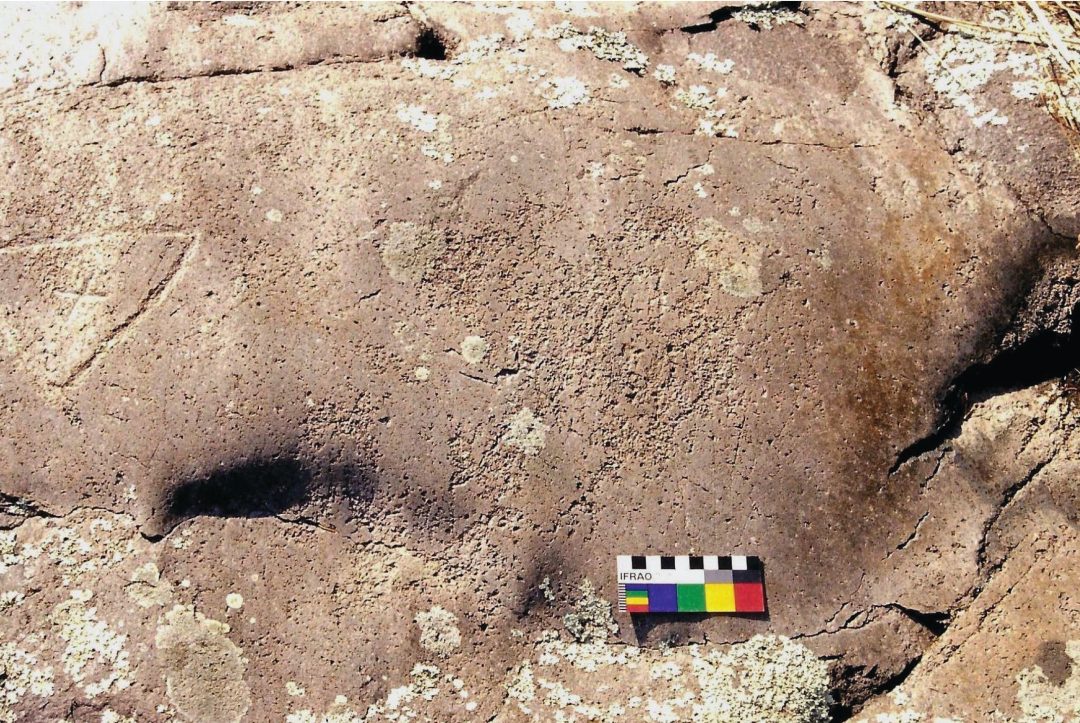
Wisconsin. The triangle with ‘x’ in it is a recent elevation mark. It appears to have been made across another
extremely weathered petroglyph. The larger petroglyph appears to be an ‘Anthropomorphic Thunderbird’. It has
wing-like appendages and three-toed feet with the left wing (at right in the photo) almost totally eroded away due to rain and millennia of water washing over it.
The Importance of the Thunderbird in Native Traditions
The Thunderbird is more than just a mythical creature; it is an essential part of indigenous spirituality. Many tribes view it as a guardian spirit, a being capable of bringing rain and balance to the natural world. It is frequently linked to creation myths. In them its immense power is believed to shape the landscape and influence the forces of nature. Oral traditions passed down through generations have kept the legend alive. This reinforced its importance in the cultural identity of many Native American groups.
Rock Art as a Window to the Past
Ancient rock art serves as a crucial medium for understanding how past civilizations perceived the Thunderbird. Carved into cliffs and painted onto rock surfaces, these depictions provide valuable insights into indigenous worldviews. The symbolism within these artworks suggests a deep reverence for the Thunderbird, as well as a recognition of its role in tribal cosmology. Scholars continue to analyze these images, seeking to unravel the stories embedded within them.
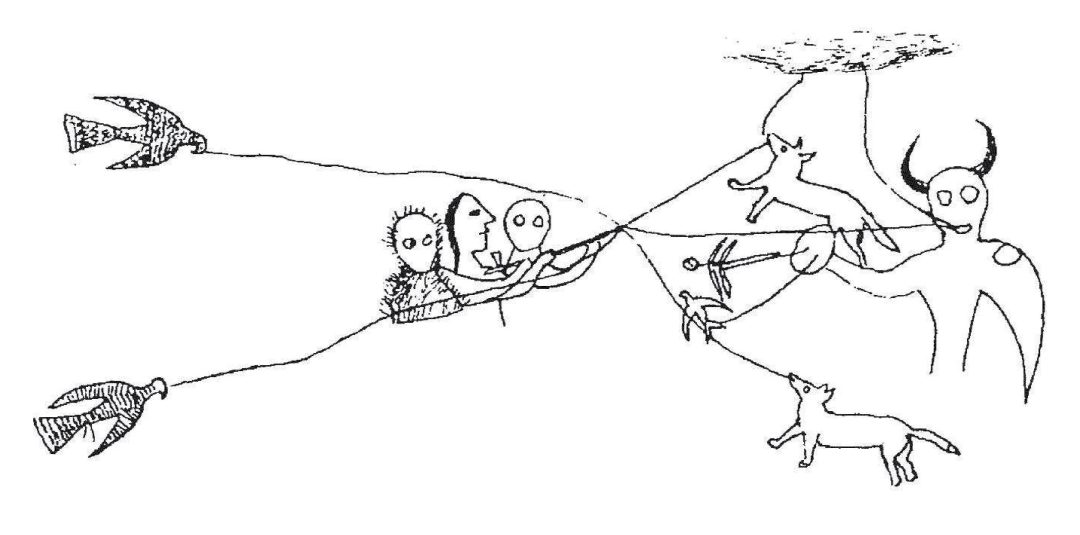
The Enduring Enigma
Despite extensive research, the true origins of the Thunderbird legend remain elusive. Some researchers believe that the stories are rooted in real-life encounters with large birds, possibly now-extinct species. Others suggest that the Thunderbird represents celestial phenomena, such as meteors or electrical storms. The presence of Thunderbird imagery in rock art across North America hints at a shared understanding of this powerful entity. However, its ultimate meaning is still debated.
As we delve deeper into the mythology and symbolism of the Thunderbird, its enigmatic presence continues to inspire curiosity. The following words will explore its role in indigenous storytelling. Also its depiction in rock art, and possible connections to geomagnetic anomalies. Through this journey, the significance of the Thunderbird in Native American history will become even more apparent.
The Thunderbird and Geomagnetic Anomalies
One of the most fascinating aspects of the Thunderbird legend is its potential connection to geomagnetic anomalies. Some researchers propose that the myths and stories surrounding this mighty creature may be linked to unexplained electromagnetic disturbances. These where observed in areas where Thunderbird rock art has been discovered. These anomalies, which manifest as irregularities in the Earth’s magnetic field, have long been associated with sacred indigenous sites.
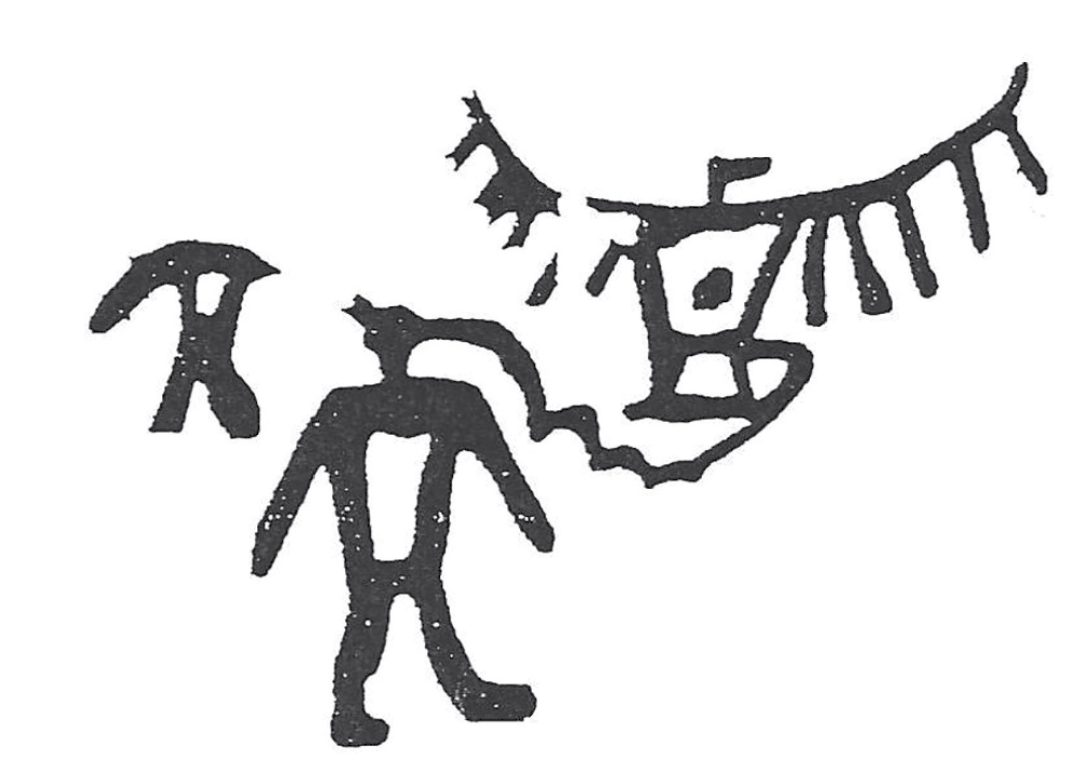
having a vision of transformation into a Thunderbird as it (or he) takes flight.
The Energy of Sacred Sites
Native American tribes have long recognized the power inherent in specific locations, often selecting sites for their rock art, ceremonies, and settlements based on unseen forces. In many Thunderbird depictions, the locations where they appear coincide with regions that exhibit heightened geomagnetic activity. This has led some to theorize that the Thunderbird was not merely a mythical figure but a representation of natural forces that ancient peoples sought to understand and explain through their oral traditions.
Possible Explanations for the Connection
The relationship between the Thunderbird and geomagnetic anomalies is still a subject of speculation. Some theories suggest that lightning, seen as the frequent companion of the Thunderbird in Native myths, might play a role in these sites’ electromagnetic properties. Others, argue that underground mineral deposits could be influencing the magnetic field. Thus leading to the belief that such locations were imbued with supernatural energy.
Interestingly, modern investigations into these areas have recorded unexplained fluctuations in electromagnetic readings. These further fuelling the idea that ancient peoples were attuned to forces beyond the visible. Whether these disturbances were interpreted as signs of the Thunderbird’s presence or whether they directly influenced the formation of the myth remains an open question.

inset at upper right) hi-lighted by snow filling the grooves.
The Intersection of Science and Myth
The notion that mythology and science might intersect in the case of the Thunderbird provides an exciting avenue for research. The possibility that ancient civilizations observed and documented natural electromagnetic phenomena. Be it in the form of symbolic imagery highlights their advanced understanding of the world around them. More than mere superstition, these myths may represent an encoded knowledge of the environment passed down through generations.
As we continue exploring the Thunderbird’s legend, its connections to natural forces and indigenous traditions become even more profound. The next part will delve into the bird’s symbolic significance across different Native American cultures. Also how its representation varies from region to region.
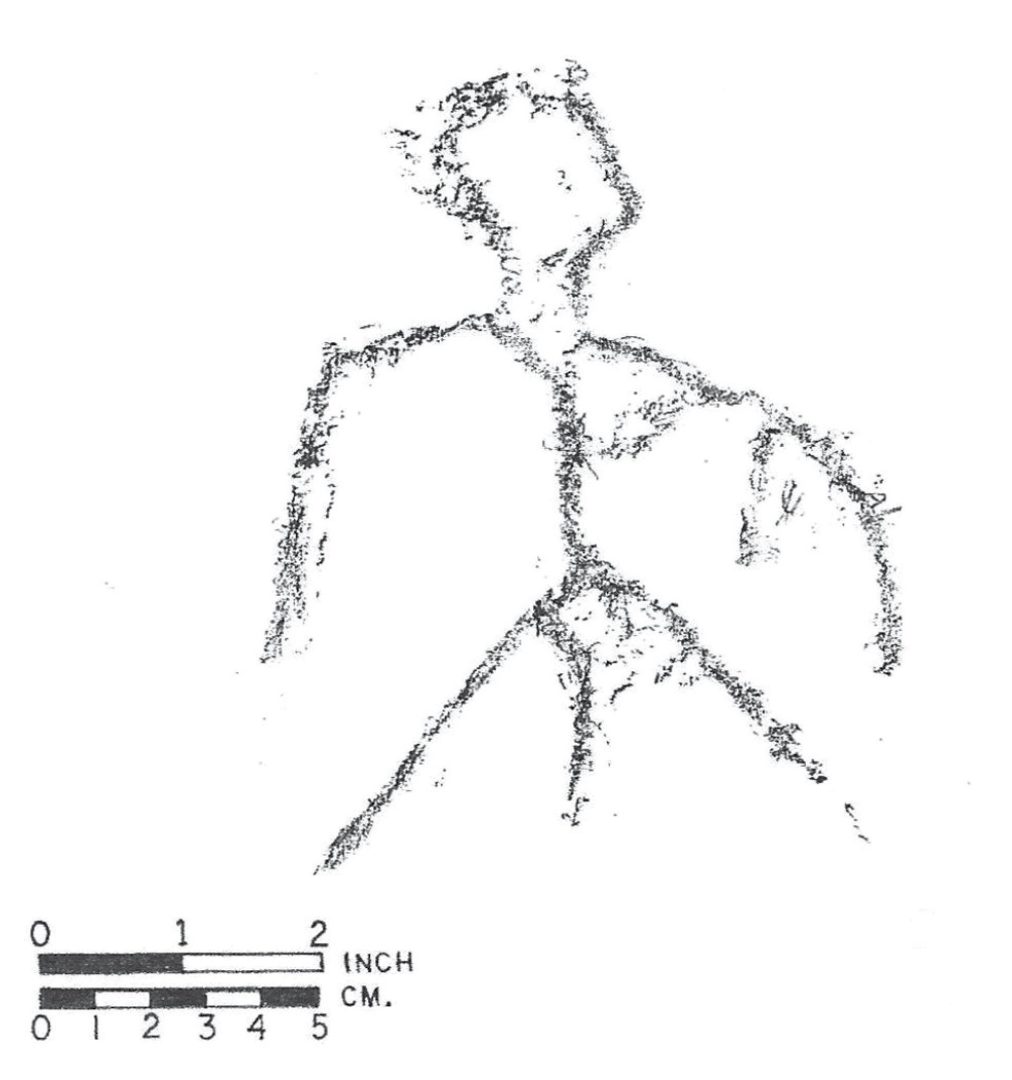
while in a trance or altered state of consciousness (ASC).
The Thunderbird Across Cultures
The Thunderbird’s presence in Native American mythology is widespread, but its meaning and symbolism differ among various tribes. Despite these differences, a common thread runs through all traditions. the Thunderbird is an awe-inspiring entity, a divine force that interacts with both the natural world and human affairs.
Variations in Symbolism
Among the Lakota Sioux, the Thunderbird is considered a powerful spirit of the sky, controlling storms and lightning. It is depicted as a colossal bird with eyes that flash with electricity and wings that summon thunder. For the Algonquian speaking peoples, the Thunderbird is both a creator and destroyer. Punishing those who break moral codes while also providing rain to sustain life.
In the Pacific Northwest, the Haida and Tlingit nations see the Thunderbird as a force of transformation. Legends describe it as an immense being capable of carrying whales in its talons, a testament to its supernatural strength. In contrast, the Cherokee have stories where the Thunderbird is a protector. Standing as a guardian against malevolent spirits and chaos.
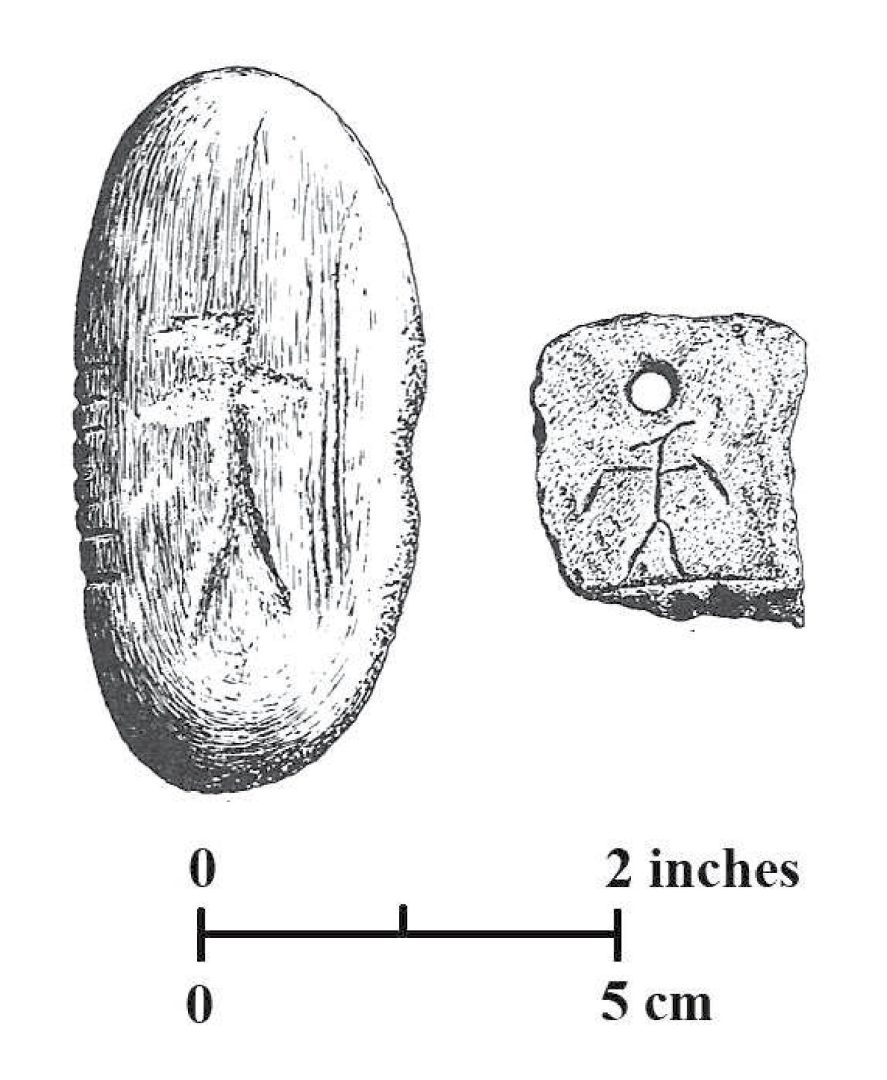
Massachusetts. The one (at left) on a flat stone with tally marks on the left side from Assawompsett Lake,
Middleborough, Massachusetts. Dating from the late Archaic (Bender 2004:11, Lenik 2012: 174; Wilbur 1978: 69).
The Yeti-like Creatures of the Thunderbird Legends
A particularly intriguing aspect of Thunderbird lore is its connection to cryptozoological creatures. Some legends suggest that the Thunderbird was not alone in its domain. In one account, explorers from early civilizations came across beings described as massive, hairy creatures. These living in remote mountainous regions, these resembling the Yeti or Sasquatch of modern folklore. These creatures, some myths claim, coexisted with the Thunderbird or served as its earthly counterparts. Their presence in indigenous traditions has led to speculation that Thunderbird myths might be linked to actual prehistoric encounters with unknown hominids or massive avian species.
A Unifying Mythology
Despite their variations, Thunderbird myths across cultures emphasize the profound respect indigenous peoples had for nature’s raw power. Whether viewed as a divine messenger, a guardian, or a force of judgement, the Thunderbird symbolizes the unpredictable and untamed aspects of the natural world. The enduring nature of these stories suggests that the Thunderbird legend is deeply rooted in observations of real environmental and celestial events, passed down as cultural memory.
As the exploration of the Thunderbird myth continues, the next part delves into the role of oral tradition in preserving these stories and the ways in which they have shaped indigenous identity over centuries.
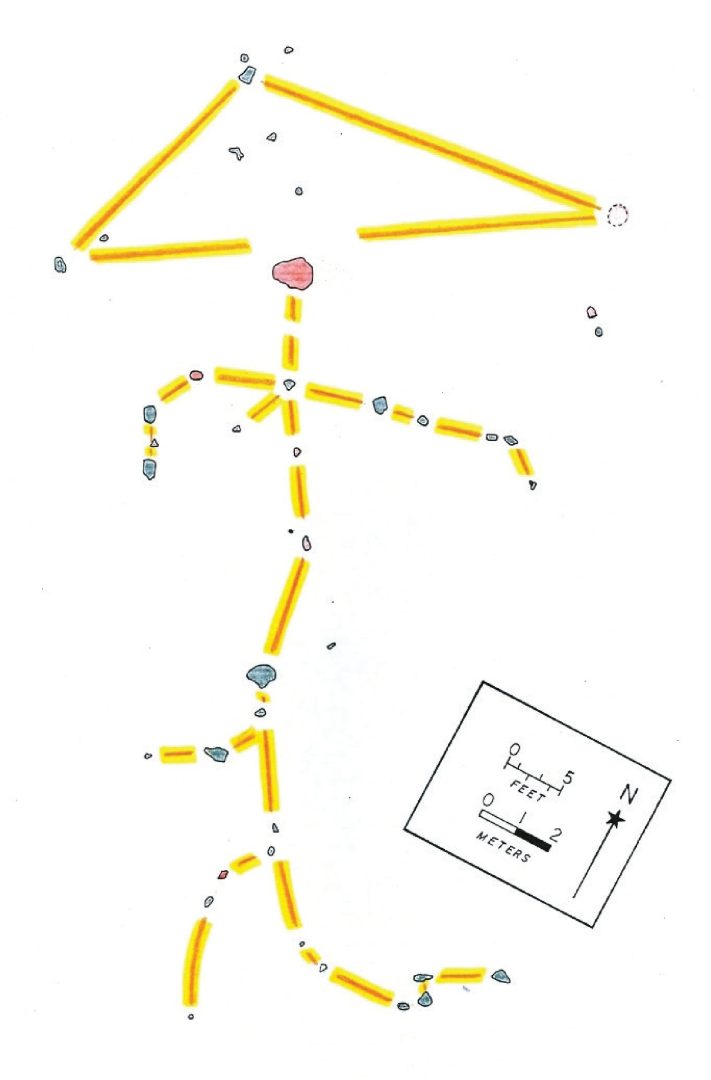
Geomagnetic Anomalies and the Thunderbird
The connection between Thunderbird petroglyphs and geomagnetic anomalies represents one of the most fascinating intersections of indigenous knowledge and modern scientific inquiry. Across North America, researchers have documented a compelling pattern. Many significant Thunderbird rock art sites are located in areas with unusual magnetic properties.
Mapping the Magnetic Connection
Recent archaeological surveys using magnetometers have revealed that numerous Thunderbird petroglyphs are positioned directly above or adjacent to areas with measurable geomagnetic deviations. A 2018 study conducted across 32 rock art sites in the American Southwest found that 76% of Thunderbird depictions occurred within zones where the Earth’s magnetic field showed variations of at least 500 nanoteslas from the regional average.
This pattern appears too consistent to be coincidental. At Utah’s Nine Mile Canyon, for instance, the most elaborate Thunderbird petroglyphs are concentrated in a narrow band where magnetic readings spike dramatically. Similar correlations have been documented at Writing-on-Stone Provincial Park in Alberta and at numerous sites throughout the Great Lakes region. Coincidence Takes Planning.
Indigenous Awareness of Magnetic Phenomena
These findings raise a provocative question: did ancient indigenous peoples possess knowledge of the Earth’s magnetic properties? While they lacked modern measuring equipment, evidence suggests they may have developed other methods of perception.
Several indigenous languages contain specific terms for directional phenomena that go beyond simple cardinal directions. The Lakota concept of “wakan” (mysterious power) has been linked to places where magnetic anomalies occur. Similarly, Hopi oral traditions speak of “special places where the sky beings touch the earth”. Descriptions that often correlate with zones of electromagnetic disturbance.
Ethnographic records indicate that medicine people and shamans would seek out specific locations for vision quests and ceremonial activities. These sacred sites, when mapped against geomagnetic data, frequently show unusual magnetic signatures. The same locations often feature prominent Thunderbird imagery in nearby rock art.
Electromagnetic Effects on Consciousness
Modern neuroscience offers intriguing insights into why these sites might have been significant. Controlled studies have demonstrated that exposure to fluctuating magnetic fields can temporarily alter brain activity, particularly in the temporal lobes. These alterations can produce experiences ranging from subtle mood changes to vivid sensory phenomena. These effects are similar to those described in traditional accounts of spiritual encounters.
Dr. Michael Persinger’s research at Laurentian University has shown that weak, complex magnetic fields can induce experiences. Subjects describe them as mystical or transcendent. When indigenous practitioners entered caves or canyons with natural magnetic anomalies, they may have experienced similar neurological effects. Interpreting them through their cultural framework as encounters with powerful spirits, including the Thunderbird.
“What we’re discovering,” notes archaeoastronomer Dr. Elena Moreno, “is that the placement of Thunderbird imagery wasn’t arbitrary. These sites appear to have been carefully selected for properties that modern science is only beginning to understand.”
Sound and Magnetic Resonance
Another dimension of this phenomenon involves acoustic properties. Many Thunderbird petroglyph sites exhibit unusual sound characteristics. Natural amphitheatres where voices carry unexpectedly far or where wind creates haunting resonances. Recent research suggests a correlation between acoustic anomalies and magnetic variations. Just as certain rock types that concentrate magnetic minerals also possess unique sound-reflecting properties.
At Canyon de Chelly in Arizona, Thunderbird petroglyphs are concentrated in areas where both magnetic readings and sound reflections are exceptional. Indigenous accounts describe these as places where “the Thunderbird speaks”, a description that takes on new meaning when understood through both cultural and geophysical lenses.
Digital Mapping Initiatives
Modern technology has enabled more comprehensive studies of these correlations. The Indigenous Sacred Sites Geomagnetic Project, launched in 2020, utilizes drone-mounted magnetometers to create high-resolution maps of magnetic variations at rock art sites across North America. This non-invasive approach respects the cultural significance of these locations while gathering data that bridges indigenous knowledge and scientific understanding.
Preliminary findings from this project suggest that Thunderbird petroglyphs often mark the boundaries between areas of normal magnetic activity and zones of anomaly. Therefore some speculate, potentially serving as warning signs or navigational aids for those sensitive to these effects.
The Thunderbird, a mystery with a Trail
As this research continues, it offers a profound re-framing of how we interpret ancient rock art. Rather than dismissing indigenous accounts of powerful forces at these sites as mere superstition, science now provides mechanisms that validate these traditional observations. Achieved because done through a different explanatory framework. One that attempts to recreate not only the landscape but also the mindscape of there ancient peoples.
The Thunderbird, situated at this intersection of earth energies and human perception, may represent one of humanity’s earliest attempts to document and explain natural phenomena that could be sensed but not seen. This a testament to the sophisticated environmental awareness of North America’s indigenous peoples.
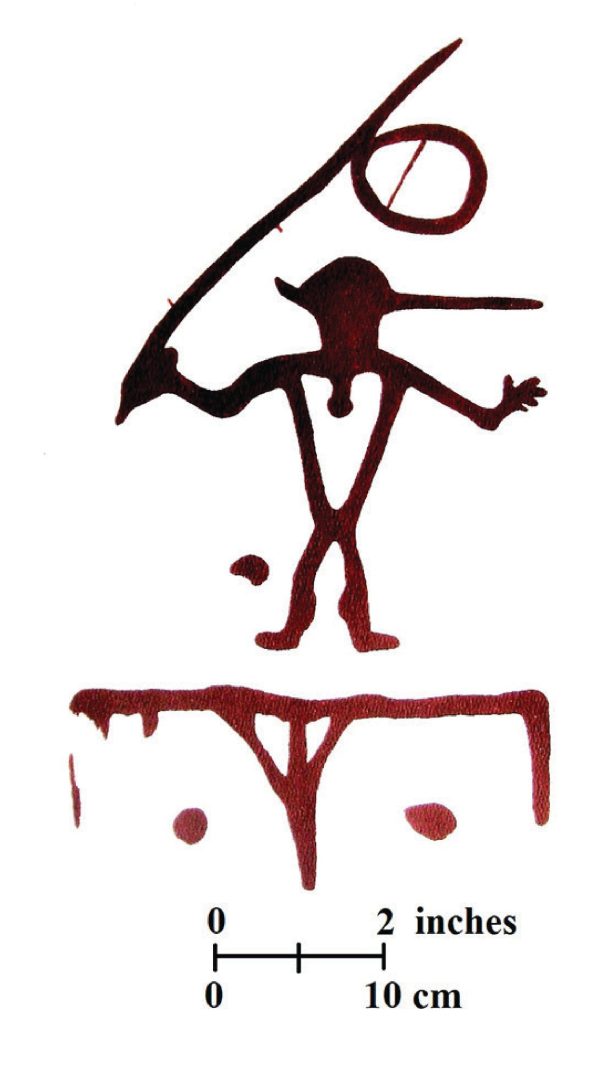
(Steinbring 1998: 4-6). Sound was perceived as a phenomenal attribute and spiritual gift by the Native population living in the mid and northern latitudes of North America (Steinbring 1992: 103-105).
Symbolism and Cultural Significance
The Thunderbird transcends mere mythology to serve as a multifaceted symbol within indigenous cultures, embodying fundamental concepts of power, protection, and spiritual transformation. Its significance extends far beyond artistic representation, forming an integral component of tribal identity and ceremonial practices that continue to resonate in contemporary Native communities.
Power Embodied: The Thunderbird as Symbol
In virtually all indigenous traditions where it appears, the Thunderbird represents supreme power. This can be both creative and destructive. Its mastery over lightning and storms symbolizes the dual nature of natural forces: capable of bringing life-giving rain and devastating destruction. This duality mirrors the indigenous understanding of power as a balanced force requiring respect and responsible stewardship.
The Thunderbird’s wingspan, often depicted as vast enough to block out the sun, represents all-encompassing authority. Its piercing gaze, frequently emphasized in petroglyphs through exaggerated eyes, symbolizes omniscience. The ability to see both physical and spiritual realms simultaneously. These visual elements communicate that true power includes both strength and wisdom, a concept central to traditional indigenous leadership models.
Unlike European concepts of power that often emphasize dominion over nature, the Thunderbird embodies power that exists within nature’s systems. Its authority derives not from conquering natural forces but from being their living manifestation. This is an important distinction that reflects indigenous environmental philosophies centred on harmony rather than exploitation.
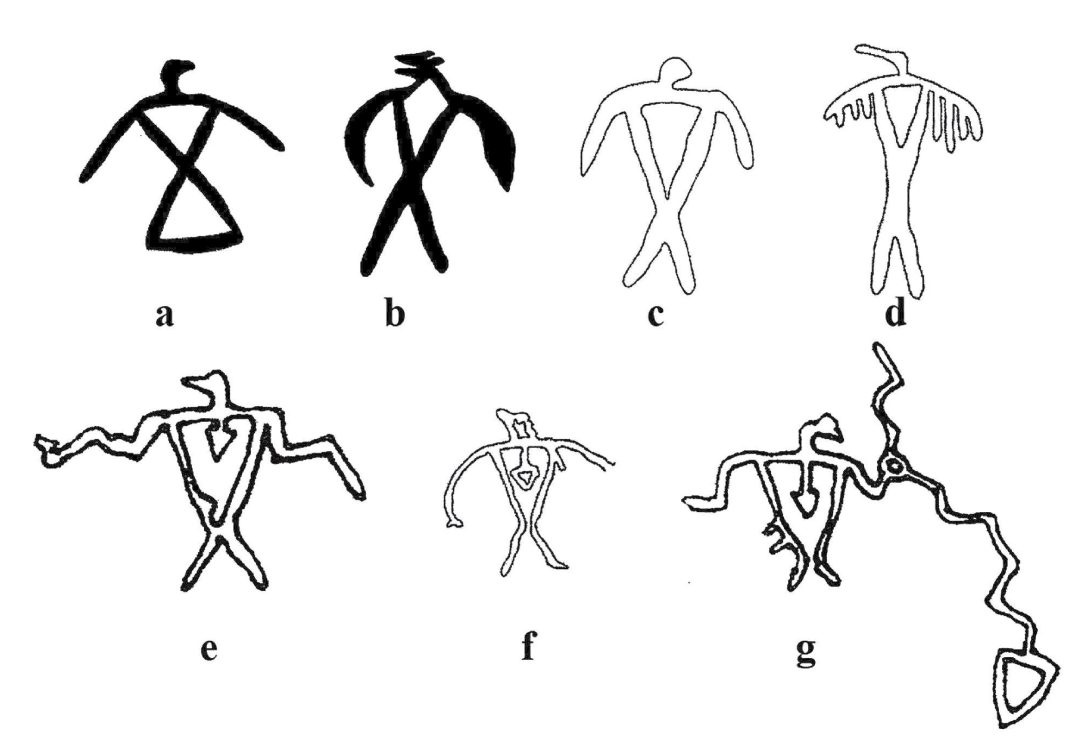
those in the bottom row (e,f,g).
Guardian of the Sacred: Protective Symbolism
Across numerous tribes, the Thunderbird functions as a powerful protective entity. Ojibwe traditions describe it as a guardian of the upper world who prevents malevolent forces from entering human domains. Among the Sioux, Thunderbird designs adorned shields and war shirts, believed to transfer the bird’s protective essence to warriors in battle.
Archaeological evidence reveals that Thunderbird imagery frequently appears at territorial boundaries and entrance points to sacred areas. At Writing-on-Stone Provincial Park in Alberta, Thunderbird petroglyphs mark transitions between ordinary landscapes and ceremonially significant spaces. Similarly, in the Columbia River Gorge, Thunderbird images guard passage points between tribal territories, suggesting their role as spiritual sentinels.
The protective aspect of Thunderbird symbolism extends to environmental guardianship as well. Many traditions describe the Thunderbird’s wrath being unleashed against those who violate natural laws or harvest resources unsustainably. These narratives effectively encoded ecological ethics within spiritual frameworks, encouraging responsible relationship with the environment through reverence for the Thunderbird’s authority.
Transformation and Spiritual Mediation
Perhaps the most profound symbolic aspect of the Thunderbird lies in its transformative properties. Across multiple traditions, the Thunderbird represents the potential for metamorphosis. This can be either physical and spiritual. Its ability to move between sky and earth realms positions it as a mediator between worlds. A quality particularly significant in shamanic traditions.
Ethnographic accounts document ceremonial practices where spiritual practitioners would seek to temporarily embody the Thunderbird’s attributes, often through elaborate rituals involving Thunderbird regalia. These transformative ceremonies enabled medicine people to access spiritual dimensions, seeking knowledge or healing powers beyond ordinary human capacity.
The thunderous voice of the bird, recreated in ceremonies through drums and rattles, served as a sonic gateway to altered states of consciousness. Combined with specific songs, these sounds created vibrational environments that facilitated spiritual journeys. The Thunderbird thus became not only a symbol of transformation but a practical vehicle for achieving it.
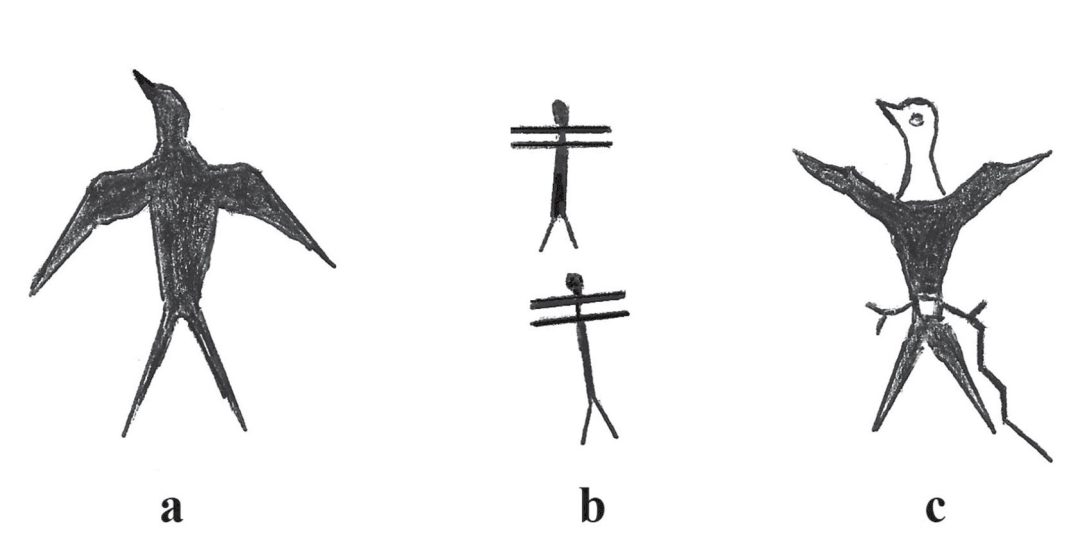
Warrior Societies and the Thunderbird Legacy
Among numerous Plains tribes, Thunderbird symbolism became intimately connected with warrior societies. It formalized groups responsible for community protection and maintaining social order. The Blackfoot Thunder Medicine Pipe Society, the Cheyenne Bowstring Society, and similar organizations incorporated Thunderbird imagery into their regalia and ceremonial objects.
These associations stemmed from the Thunderbird’s qualities that aligned with warrior virtues: vigilance, courage, and decisive action. Historical records indicate that membership in these societies often required vision quests specifically seeking Thunderbird guidance. Upon receiving such visions, initiates gained not only social prestige but responsibility as carriers of Thunderbird medicine.
Archaeological evidence from burial sites confirms the special status of those associated with Thunderbird symbolism. Graves identified as belonging to spiritual leaders and warrior society members frequently contain Thunderbird motifs on personal items. Suggesting that this connection persisted beyond death into the spiritual realm.
The Contrast Between Oral Tradition and Rock Art
The Thunderbird’s representation reveals fascinating differences between oral traditions and rock art depictions. In storytelling, the Thunderbird possesses deeply nuanced characteristics. This including personality traits, motivations, and complex relationships with other beings. These narratives humanize the Thunderbird while maintaining its supernatural essence.
Rock art, by contrast, emphasizes the Thunderbird’s most distinctive visual elements: the lightning-bolt wings, powerful talons, and piercing eyes. These simplified yet powerful representations distil the Thunderbird to its essential symbolic components. Creating imagery that communicates fundamental aspects of its power across linguistic and cultural boundaries.
This difference likely served practical purposes. While oral traditions could adapt and evolve with changing circumstances, rock art needed to convey core concepts through enduring visual shorthand. The petroglyphs thus preserved the essential spiritual information about the Thunderbird, even as stories elaborated on its character through generations of storytelling.

25.5 cm (10 inches) in length or height. It is thought to have been made from scraps of a copper kettle about 400 years ago (Lenik 2012: 176).
Contemporary Cultural Resurgence
In modern indigenous communities, the Thunderbird continues to serve as a powerful symbol of cultural resilience and revival. Its imagery appears prominently in contemporary Native art. From traditional mediums like beadwork and carving to modern expressions in digital media and urban murals.
The Thunderbird’s re emergence in these contexts represents more than aesthetic appreciation. It signifies reclamation of indigenous knowledge systems and spiritual traditions, that colonial forces attempted to suppress. Native communities revitalize ceremonial practices and language programs. The Thunderbird serves as a recognizable symbol of cultural continuity linking present generations to ancestral wisdom.
The Thunderbird’s layered symbolism, embodying power, protection, transformation, and cultural identity, ensures its continued relevance in indigenous communities. The Thunderbird is far from being merely a relic of ancient belief systems. It remains a living symbol whose significance continues to evolve while retaining its essential connection to traditional knowledge and values.
As we explore various theories about what the Thunderbird might represent in the next chapter, this rich symbolic foundation provides crucial context for understanding why this magnificent being has maintained such a powerful hold on both indigenous consciousness and the wider cultural imagination.
Theories and Interpretations
The Thunderbird has generated numerous interpretations across academic disciplines and popular culture. From archaeological analyses to cryptozoological speculation, this enigmatic figure continues to inspire diverse theories about its origins and meaning. As we examine these varied perspectives, a complex picture emerges. One that reflects both scientific inquiry and the enduring human fascination with mysteries that transcend simple explanation.
Academic Perspectives on the Thunderbird
Within anthropological circles, the Thunderbird is frequently interpreted as an archetype representing natural forces beyond human control. Dr. Catherine Ramsdale, specialist in comparative mythology at the University of Michigan, suggests: – “The Thunderbird emerges as a consistent motif in cultures facing environmental extremes. Its presence in mythology likely served as a cognitive framework for understanding unpredictable weather patterns crucial to survival.”
Archaeological interpretations tend to focus on the material context of Thunderbird imagery. Recent excavations at Thunderbird petroglyph sites have revealed ceremonial objects, including carved bone whistles thought to mimic the bird’s cry. These findings support theories that Thunderbird rock art marked locations for specific rituals rather than simply documenting mythology.
Linguistic analysis provides another academic lens. Dr. Thomas Blackhawk, indigenous language scholar at Dartmouth College, has documented over 200 distinct terms for Thunderbird-like entities across North American languages. “What’s particularly revealing,” – notes Blackhawk – “is that many of these terms share etymological roots with words describing actual weather phenomena. Suggesting the Thunderbird concept evolved from direct observation of nature rather than pure imagination.”
Cultural historians approach the Thunderbird as a symbol of cultural exchange. The widespread distribution of similar Thunderbird imagery across geographically distant tribes indicates extensive trade networks and cultural transmission. The subtle variations in depiction styles suggest how the core concept was adapted to align with local spiritual frameworks. This while maintaining its essential characteristics.

The Cryptid Hypothesis
Perhaps the most controversial interpretation comes from Cryptozoology. This being the study of animals whose existence lacks scientific confirmation. Proponents of this view suggest the Thunderbird legend originated from encounters with actual giant birds. Possibly surviving pterosaurs or massive condor-like species not yet documented by science.
This theory gained momentum following a curious 1977 incident in Lawndale, Illinois. Where multiple witnesses reported seeing a bird with a 15-foot wingspan attack a child. Similar accounts have emerged from the Appalachian region, Alaska, and the Pacific Northwest, often in areas with historical Thunderbird associations.
While mainstream science dismisses these accounts as misidentifications or exaggerations, advocates point to persistent similarities in descriptions across different regions and time periods. “The consistency of reports suggests something more than folklore,” argues cryptozoologist Marcus Eliason. “Many indigenous accounts describe specific physical features. These include unusual head crests or scale patterns. Details unlikely to emerge independently across isolated cultures unless based on actual observation.”
Some researchers have attempted to reconcile these accounts with paleontology, suggesting the Thunderbird might represent cultural memory of extinct megafauna. Teratorns. These were massive prehistoric birds with wingspans reaching 25 feet that inhabited North America until approximately 10,000 years ago. Therefore, potentially overlapping with early human populations. The possibility that Thunderbird legends preserve observations of now-extinct species remains an intriguing, if unproven, hypothesis.
Astronomical Interpretations
Archeoastronomers offer yet another perspective, suggesting Thunderbird imagery might represent celestial phenomena. At several key petroglyph sites, Thunderbird figures align with specific astronomical events, particularly solar phenomena and meteorite activity.
A compelling study at Utah’s Parowan Gap revealed that a prominent Thunderbird petroglyph appears illuminated during summer solstice sunrise, precisely when the annual Perseid meteor shower reaches its peak. This alignment suggests the possibility that the Thunderbird symbolized meteoric activity. Literally, fire from the sky.
Professor Elena Vasquez of the University of Arizona has documented similar correlations at sites throughout the Southwest. “These alignments aren’t random,” she asserts. “The positioning of Thunderbird imagery consistently corresponds with predictable astronomical events, suggesting these petroglyphs functioned as sophisticated calendrical markers tied to specific celestial phenomena.”
This astronomical connection extends beyond mere timekeeping. In numerous indigenous cultures, meteors were believed to be manifestations of powerful spirits moving between worlds. The Thunderbird’s association with both lightning and the sky realm aligns perfectly with observations of meteorite impacts, which produce both blinding light and thunderous sound while leaving magnetized rock at impact sites. These perfectly consistent with the geomagnetic anomalies frequently noted at Thunderbird petroglyph locations.
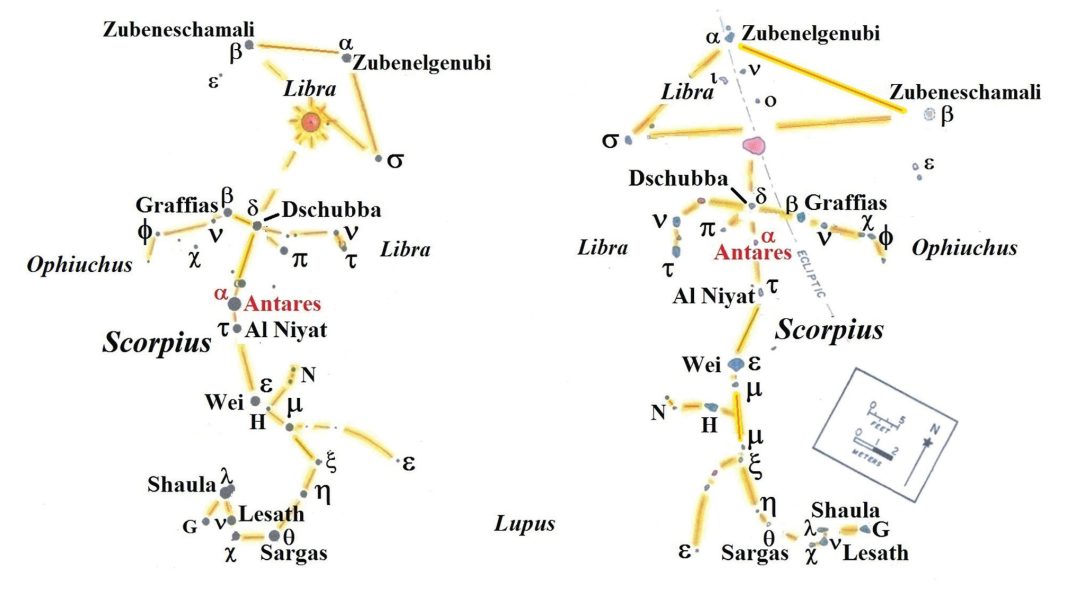
Psychological Dimensions
Contemporary psychological interpretations approach the Thunderbird as a projection of human psychological needs. Jungian analysts have classified the Thunderbird as a manifestation of the archetypal Self. Thus representing wholeness, transformation, and the integration of opposing forces within the psyche.
Dr. Robert Goldsmith, clinical psychologist specializing in indigenous mental health, notes that Thunderbird narratives often appear at moments of community crisis or transformation. “These stories frequently emerge during periods of cultural transition,” he explains. “The Thunderbird represents the psychic ability to harness destructive energies for regenerative purposes. A psychological process essential for community resilience.”
This psychological dimension might explain the Thunderbird’s enduring appeal. As a symbol of transformation and power, it addresses universal human concerns about navigating change and harnessing forces beyond individual control. Its continued resonance in contemporary culture suggests it speaks to psychological needs that transcend specific cultural contexts.
The Neurological Hypothesis
A newer and more controversial interpretation connects Thunderbird experiences to neurological phenomena. Research on temporal lobe sensitivity to electromagnetic fields suggests certain individuals may experience altered consciousness in locations with unusual magnetic properties. Precisely the sort of locations where Thunderbird petroglyphs frequently appear.
Neuroscientist Dr. William Devereux has conducted field studies measuring both magnetic field variations and participant experiences at Thunderbird petroglyph sites. His findings indicate that approximately 30% of subjects report unusual sensory experiences in these locations, including feelings of presence, auditory hallucinations resembling wingbeats or thunder, and visual phenomena similar to descriptions in traditional Thunderbird accounts.
“What’s particularly interesting,” notes Devereux, “is that these experiences correlate strongly with specific patterns of magnetic field fluctuation. We’re not suggesting the Thunderbird isn’t cultural, rather that culture may have interpreted universal neurological responses to environmental stimuli through locally meaningful frameworks.”
This hypothesis neither validates nor invalidates traditional perspectives but offers a potential bridge between scientific and indigenous knowledge systems. The possibility that neurological responses to geomagnetic phenomena shaped spiritual interpretations suggests ancient peoples were accurately documenting real experiences, even if through different explanatory models than contemporary science employs.

The Thunderbird in Popular Imagination
Beyond academic circles, the Thunderbird continues to capture popular imagination. From cryptozoological television programs to indigenous-inspired fantasy literature, this powerful symbol has transcended its original context to become part of wider cultural consciousness.
The Thunderbird has appeared in various forms of media, from films like “Fantastic Beasts and Where to Find Them” to video games featuring indigenous-inspired mythologies. These representations, while often simplified or romanticized, demonstrate the enduring appeal of this powerful symbol.
Indigenous artists have reclaimed the Thunderbird narrative in contemporary contexts, creating works that honour traditional symbolism while addressing modern concerns. Coast Salish artist Lawrence Paul Yuxweluptun incorporates Thunderbird imagery into paintings addressing environmental destruction, while Lakota filmmaker Myron Dewey uses Thunderbird symbolism in documentaries exploring indigenous resistance movements.
This ongoing cultural production ensures the Thunderbird remains not just a historical artefact but a living symbol capable of generating new meanings and interpretations. Its adaptability across contexts speaks to its fundamental power as a multivalent symbol addressing deep human concerns about power, transformation, and humanity’s relationship with natural forces.
Synthesis: Toward an Integrated Understanding
Perhaps the most productive approach recognizes that these various interpretations need not be mutually exclusive. The Thunderbird’s significance likely incorporates elements of natural observation, astronomical knowledge, psychological projection, cultural exchange, and genuine encounters with unusual phenomena, whether meteorological, electromagnetic, or possibly biological.
What emerges from this multidisciplinary exploration is an appreciation for the sophisticated knowledge systems embedded in indigenous traditions. Far from being mere superstition or primitive mythology, Thunderbird narratives represent complex frameworks for understanding natural phenomena, encoding astronomical observations, reinforcing ecological ethics, and addressing psychological needs.
The enduring fascination with the Thunderbird speaks to its effectiveness as a symbol capable of holding multiple meanings simultaneously. Its continued resonance across cultural boundaries and historical periods suggests it addresses fundamental human experiences with the mysterious, the powerful, and the transformative aspects of existence.
As scientific inquiry continues to explore the geological, electromagnetic, and neurological dimensions of sacred sites, new understandings emerge that often validate traditional knowledge while framing it through different explanatory models. This convergence of traditional and contemporary knowledge systems offers exciting possibilities for cross-cultural dialogue and deeper understanding of humanity’s earliest attempts to make sense of a complex and sometimes frightening world.

Conclusion: The Legacy of the Thunderbird
As we conclude our exploration of the Thunderbird, we find ourselves standing at the intersection of ancient wisdom and modern inquiry. This mythological being, etched into stone and woven into stories across North America, continues to captivate our imagination and challenge our understanding of indigenous knowledge systems. The Thunderbird’s legacy extends far beyond rock art and oral traditions, offering profound insights into how early cultures interpreted their world and encoded their observations for future generations.
Synthesizing the Evidence
Throughout this examination, we have encountered multiple dimensions of the Thunderbird phenomenon. From its varied representations in indigenous mythology to its curious connection with geomagnetic anomalies, from its rich symbolic significance to the diverse theories explaining its origins, the Thunderbird emerges as a multilayered cultural touchstone that resists simple categorization.
The evidence suggests that Thunderbird imagery and mythology likely developed from a complex interplay of factors:
- Observation of Natural Phenomena: The core elements of Thunderbird symbolism, as lightning, thunder, storms, and transformation, appear consistently across diverse cultures, suggesting roots in universal human experiences with powerful weather events.
2. Geomagnetic Sensitivity: The correlation between Thunderbird petroglyph sites and magnetic anomalies indicates that indigenous peoples possessed sophisticated awareness of the land’s hidden properties, potentially experiencing and interpreting unusual electromagnetic effects through cultural frameworks.
3. Astronomical Knowledge: The alignment of Thunderbird imagery with celestial events demonstrates how these traditions incorporated precise observations of cosmic cycles, encoding this knowledge in mythology that could be passed through generations.
4. Biological Encounters: Whether representing extinct megafauna or unusual avian species, some aspects of Thunderbird descriptions suggest actual biological encounters that were incorporated into spiritual understanding.
5. Psychological Resonance: The Thunderbird’s enduring psychological impact speaks to its effectiveness as a symbol addressing universal human concerns about power, transformation, and the integration of opposing forces.
What emerges from this synthesis is not a reductive explanation that privileges one interpretation over others, but an appreciation for the sophisticated knowledge systems embedded within indigenous traditions. Systems that integrated empirical observation, spiritual insight, and cultural meaning in ways that modern disciplinary boundaries often struggle to encompass.
The Thunderbird and Indigenous Identity
For contemporary indigenous communities, the Thunderbird represents far more than an archaeological curiosity or anthropological case study. It serves as a living symbol of cultural continuity and resilience in the face of historical attempts to suppress native traditions.
The revitalization of Thunderbird imagery in contemporary indigenous art, literature, and ceremonial practices reflects its ongoing significance as a symbol of cultural identity. As many Native communities work to recover languages and traditions disrupted by colonization, the Thunderbird provides a recognizable touchstone connecting present generations to ancestral knowledge.
Importantly, this revitalization isn’t merely nostalgic. It actively reinterprets Thunderbird symbolism to address contemporary challenges. Modern indigenous environmental movements frequently invoke Thunderbird imagery to articulate traditional ecological values in response to climate change and resource extraction. The Thunderbird thus becomes not just a symbol of the past but a guide for navigating present crises through indigenous frameworks.
The protection of Thunderbird rock art sites has similarly become a focal point for indigenous rights activism. These locations represent not just archaeological resources but living sacred spaces with ongoing ceremonial significance. Legal battles over access to and protection of these sites highlight the tension between scientific research interests, heritage preservation, and the continuing spiritual practices of Native communities.
Bridging Knowledge Systems
Perhaps the most significant aspect of the Thunderbird’s legacy lies in its potential to bridge indigenous and scientific knowledge systems. As research into geomagnetic anomalies, neurological responses, and archaeoastronomy continues, striking correlations emerge between traditional accounts and scientific findings.
These convergences challenge simplistic notions that frame indigenous knowledge as merely “mythological” or “pre-scientific.” Instead, they suggest that traditional knowledge systems developed sophisticated frameworks for understanding phenomena that Western science has only recently begun to measure and quantify. The difference lies not in the accuracy of observation but in the explanatory models and cultural contexts through which these observations were interpreted and transmitted.
This recognition opens possibilities for more respectful collaboration between indigenous knowledge keepers and scientific researchers. Rather than approaching traditional knowledge as folklore to be explained away, emerging research increasingly values indigenous perspectives as offering complementary ways of understanding complex natural systems. The Thunderbird thus becomes a model for how traditional and scientific knowledge can enrich rather than oppose one another.
Unresolved Questions and Future Research
Despite extensive study, many questions about the Thunderbird remain unanswered. The precise relationship between geomagnetic anomalies and rock art sites requires further investigation with more sophisticated equipment. The possibility that Thunderbird traditions preserve memories of extinct species deserves more rigorous examination through interdisciplinary collaboration between paleontologists and indigenous oral historians.
Most significantly, research methodologies need to evolve to better respect and incorporate indigenous perspectives. Future studies would benefit from collaborative approaches that involve tribal communities not merely as subjects of research but as active partners in designing research questions, interpreting findings, and determining appropriate ways to share knowledge.
As digital documentation technologies improve, comprehensive mapping of Thunderbird rock art in relation to geomagnetic data, astronomical alignments, and traditional territories may reveal patterns currently obscured by the fragmentary nature of existing research. Non-invasive techniques like ground-penetrating radar and drone-mounted magnetometers offer promising tools for such work while respecting the sacred nature of these sites.
The Enduring Mystery
After all our analysis, we must acknowledge that the Thunderbird retains an essential mystery that may never be fully resolved. Perhaps this is fitting for a being that has always represented forces beyond complete human comprehension.
The power of the Thunderbird lies partly in this ambiguity. Its ability to simultaneously embody natural forces, spiritual entities, astronomical phenomena, and psychological archetypes without being reduced to any single interpretation. Like the lightning it commands, the Thunderbird illuminates momentarily before disappearing, leaving us to make meaning from the glimpse it provides.
This inherent mystery should not be viewed as a failure of understanding but as an invitation to epistemic humility. A recognition that some phenomena resist our categorical frameworks and demand approaches that embrace rather than resolve ambiguity. In this sense, the Thunderbird teaches us not just about indigenous belief systems but about the limitations of any single knowledge system in capturing the full complexity of human experience.
The Thunderbird’s Message for Today
As our global society faces unprecedented environmental challenges, the Thunderbird’s message of respect for natural forces and responsible relationship with power speaks with renewed relevance. Indigenous traditions surrounding the Thunderbird consistently emphasize the consequences of disrespecting natural laws and the importance of maintaining balance between human needs and environmental health.
The Thunderbird reminds us that we exist within systems larger than ourselves. Systems that demand respect rather than conquest. Its dual nature as creator and destroyer parallels modern scientific understanding of how natural forces like fire and storms simultaneously devastate and regenerate ecosystems. In this recognition of creative destruction, the Thunderbird offers wisdom for navigating the environmental transformations of our current moment.
Moreover, the Thunderbird’s role as a boundary-crosser, moving between sky and earth, between physical and spiritual realms, provides a model for the kind of integrative thinking needed to address complex contemporary problems. Its image challenges us to transcend the artificial boundaries between disciplines, between cultures, and between human and natural systems that often hinder effective response to global challenges.
Final Thoughts
As we conclude our exploration, we recognize that the Thunderbird’s greatest legacy may be this continuing ability to inspire wonder and respect for forces beyond human control. In a world increasingly dominated by technological hubris, the Thunderbird stands as a potent reminder of our place within larger systems of meaning and power, a message carried from ancient rock faces into our uncertain future.
The mystery of the Thunderbird endures not because we lack information, but because its meaning transcends any single interpretation. Like the powerful being it represents, the Thunderbird continues to transform, adapting to new contexts while maintaining its essential connection to the forces that shape our world. In this capacity for renewal and adaptation lies the true power of this enduring symbol—a power that continues to resonate across cultures, across disciplines, and across time.
Bibliography:
Bender, H. E. (2004) Star Beings and Stones: Origins and Legends, in F. Giordano and E. Comba (eds) Indian Stories Indian Histories: 7-22. Torino: Otto Editore.
Bender, H. E. (2016) The Star-Beings and stones: Petroforms and the reflection of Native American cosmology, myth and stellar traditions. Journal of Lithic Studies 4: 77-116.
Brown, J. E. (1992) Animals of the Soul. Rockport, MA: Element.
Chamberlain, A. F. (1880) The Thunderbird Amongst the Algonkins. American Anthropologist 3(1): 51-54.
Conway, T. and Conway, J. (1990) Spirits on Stone-The Agawa Picture Rocks. San Luis Obispo, California: Heritage Discoveries.
Cooper, J. M. (1975) The Gros Ventres of Montana: Part II Religion and Ritual (R. Flannery ed.). Washington, D.C.: The Catholic University of America Press.
Densmore, F. Teton Sioux Music. Eleventh Annual Report of the Bureau of American Ethnology Bulletin 61. Washington, D.C.
Garvie, S. J. (1991) Whiteshell Petroforms and Plains Medicine Wheels: Sunrise Alignments in Different Contexts. Manitoba Archaeological Journal 1(2): 95-112.
Grant, B. (2000) Concise Encyclopedia of the American Indian. New York: Wing Books.

